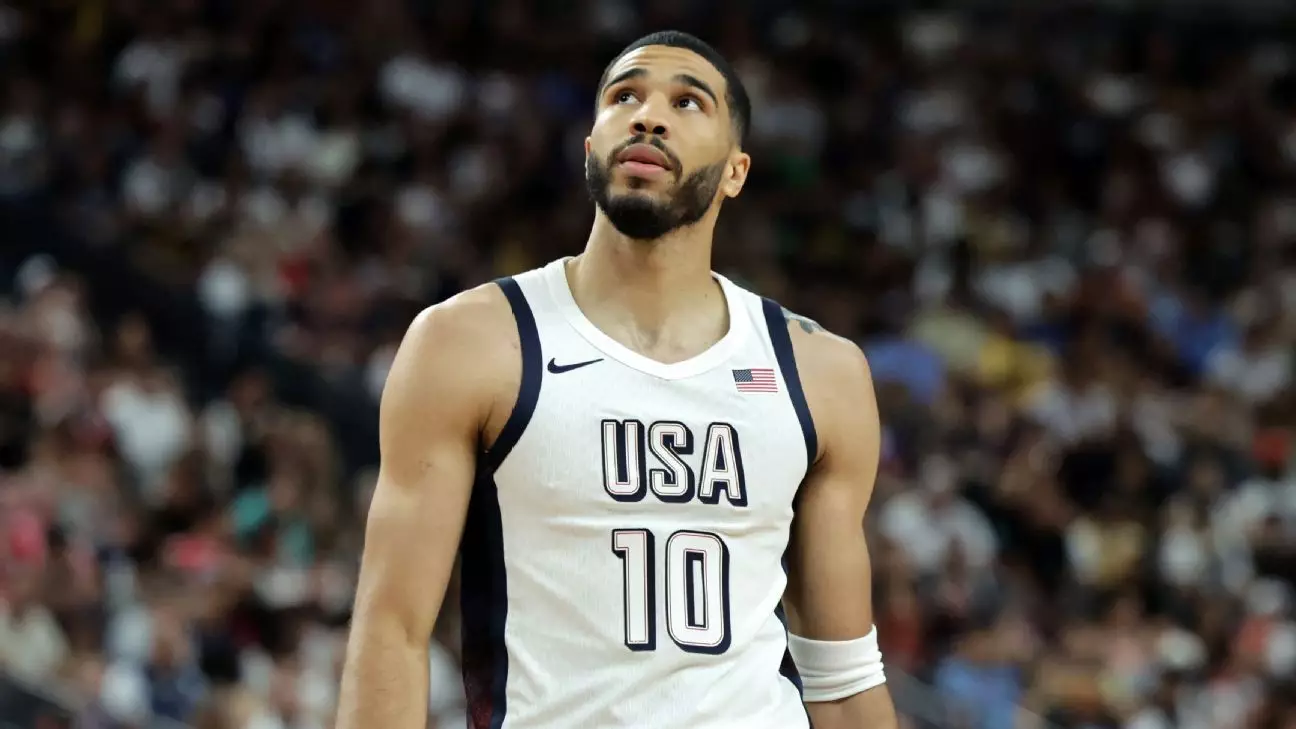Team USA showcased a dominant performance in their Olympic-opening 110-84 victory against Serbia, with strong production from all players on the roster. However, the decision to sit Jayson Tatum, a first-team All-NBA player and champion, inevitably drew attention. Coach Steve Kerr took on the responsibility of addressing this situation directly, holding meetings with Tatum and discussing the lineup decision with the media. Although Tatum was omitted from the starting lineup against Serbia, Kerr assured that he would be back in action for the upcoming game against South Sudan. This choice to sit Tatum raised questions about the rationale behind the decision-making process and the team’s strategy for future matchups.
Kerr explained that the decision to sideline Tatum was based on a detailed analysis of the matchups against Serbia and the performance of different lineup combinations in the exhibition games. With Serbia boasting strong big men like Nikola Jokic, Kerr opted to include three centers – Joel Embiid, Anthony Davis, and Bam Adebayo – in his rotation. Additionally, the presence of formidable guards on Serbia’s roster led Kerr to prioritize Derrick White as a key bench player. White’s defensive contributions, including steals and blocks, proved valuable, with Team USA enjoying a significant advantage when he was on the court. The unique rules of FIBA games in the Olympics, which do not include a defensive three-second violation and have relaxed goaltending regulations after the ball hits the rim, also influenced Kerr’s lineup decisions.
Kerr acknowledged the challenges of managing a roster filled with world-class players and the difficulty of sitting players of Tatum’s caliber. Despite the apparent paradox of leaving out exceptional talents, Kerr emphasized the importance of asking players to focus on winning individual games while maintaining a team-oriented mindset. Drawing from his past experiences with unforeseen circumstances affecting roster decisions, Kerr highlighted the necessity of adapting to evolving situations and making strategic adjustments accordingly.
For the upcoming game against South Sudan, a team known for its athleticism and proficiency in shooting threes, Tatum’s versatility and defensive capabilities are expected to be instrumental. In contrast to the matchup against Serbia, where big men were prioritized, the game against South Sudan calls for a different approach centered around speed and perimeter defense. Tatum’s previous performances in exhibition games and his ability to guard wings effectively position him as a key player for countering South Sudan’s playing style. Kerr’s decision to reintegrate Tatum into the lineup reflects a strategic shift based on the specific challenges posed by the upcoming opponent.
Team USA’s initial lineup decision, including the choice to bench Jayson Tatum, was driven by a combination of matchup considerations, strategic analysis, and the need to adapt to varying game scenarios. While such decisions may appear perplexing given the caliber of players involved, Kerr’s emphasis on prioritizing team success and making tactical adjustments highlights the complexities of coaching a roster brimming with talent. As Team USA continues its Olympic campaign, the ability to leverage individual strengths and implement cohesive game plans will be crucial in pursuing a successful outcome.


Leave a Reply